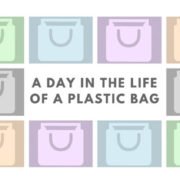Living a Sustainable Life
If you’ve been hanging out with us for a while, you’ve probably already mastered the art of sustainable fashion and already doing your part to make this world a friendlier place. So what’s next?
Well, you’re already on the right track. Switching to slow fashion and recognizing fast fashion for the evil that it is, is in itself a huge step towards a more sustainable life. We know and you know that it is not an easy switch and just the fact that you’ve made this lifestyle change means that you care deeply about how your actions impact the environment and humanity.
Here are some other aspects in your daily life that you can focus on to contribute to a greener, kinder and more sustainable planet. You’d be surprised how easy some of those changes are!
Change starts at Home:
– Save energy: You can make a huge positive impact on the environment just by consuming less energy. Simple habits such as switching off all lights before leaving your house or better yet, turning off the lights whenever you exit a room are a good place to start. Don’t charge your phone overnight, unplug all appliances that you’re not using and hang your clothes to dry instead of using a drier. Switch to LED lights or CFL bulbs as it has proven to last longer and be more efficient in energy consumption. The environment will send you a Thank You note in the form of a reduced electricity bill!
– Reduce waste: The best way to reduce waste is to consume less! If it can be solved with one paper towel, why use two? If a regular towel can do the job, why use the paper towel in the first place? The second best way to reduce waste is to reuse or upcycle. Those empty jars will definitely be of use later on and that wine bottle will make a lovely vase. If it can’t be used, then the third best way is to recycle. Finally, consider donating or reselling any item that you no longer have use for.
– Save water: The biggest favor you can do to Earth is to save water! Every drop of water counts so keep your showers short, check for water leakage and don’t keep the tap running!
Shop Responsibly:
– Plastic Who?: Plastic is probably the number one enemy of the environment and most often than not ends up in the ocean, harming the sea life along the way. When heading to the grocery store, bring your own shopping bag with you to minimize the use of plastic bags. If possible, avoid buying plastic-wrapped products and opt for paper bags instead. Ditch the single-use, disposable products and opt for long-lasting ones instead. Always keep with you a refillable coffee cup for those essential coffee breaks!
– Shop fair trade: It’s sad but a lot of the products that we buy are made using forced or child labor. Check for Fair Trade Certifications, this will guarantee that the product you are buying was made ethically using fair labor.
– Choose eco-friendly products: Bamboo toothbrushes, organic cotton and biodegradable garbage bags are simple examples.
Connect with Nature:
– Transportation: If your feet can take you there, then let your feet take you there! Walking or biking to your destination will let you get a feel of nature, escape the stress of traffic, save up on gas, reduce CO2 emissions, get that much needed exercise and daily dose of vitamin D! It’s a win-win situation if you ask us!
– Disconnect: Every now and then, take a break from technology, get offline and spend some time in nature instead! Outdoor activities such as a walk in the park, a little family picnic, outdoor yoga, a swim in the sea, or a good hike can refresh your soul and make you feel more alive, all the while consuming less energy. Don’t worry, Netflix and your online friends will still be there when you return.
– Plant seeds: Gardening, growing your own food or even planting a tree are great ways to contribute positively to nature!
Lifestyle changes:
– Go Paperless: Disconnecting from technology may be important but technology can also have a positive effect on the environment, especially when it comes to paper usage. With emails, calendars, notes, reminders, document sharing, e-tickets and coupons, and infinite other apps at your disposal, you can pretty much do without any paper at all.
– Travel Sustainably: Living sustainably at home is not enough! Take sustainability wherever you go and make sure to make your travels as sustainable as possible!
– Eat Well: Less processed food, less home delivery or takeaway, and more organic food!
Human Connections:
– Involve your children: Teach your children early on in their lives the impact that their actions can have on the world. If they start at a young age, chances are they’ll carry their sustainable values with them as they grow up!
– Give Back: Help others, be kind and compassionate, donate, volunteer, support causes and charities, stand up for human rights and equality.
– Raise Awareness: Be an inspiration to the people around you and use your voice and your human connections to inspire others to take actions and follow your sustainable footsteps.













Stay tuned